Iraq’s Weapons Of Mass Destruction – Full Report
IRAQ’S
WEAPONS OF
MASS
DESTRUCTION
THE ASSESSMENT OF THE
BRITISH
GOVERNMENT
From http://www.ukonline.gov.uk/featurenews/iraqdossier.pdf
CONTENTS
Foreword by the Prime Minister
3
Executive Summary 5
Part 1: Iraq’s Chemical, Biological,
Nuclear and Ballistic Missile Programmes 9
Chapter 1: The role of intelligence 9
Chapter 2: Iraq’s programmes 1971–1998
11
Chapter 3: The current position
1998–2002 17
Part 2: History of UN Weapons Inspections 33
Part 3: Iraq under Saddam Hussein 43
FOREWORD BY THE PRIME MINISTER, THE RIGHT HONOURABLE TONY BLAIR MP
Its work, like the material it analyses, is largely secret. It is unprecedented for the Government to publish this kind of document. But in light of the debate about Iraq and Weapons of Mass Destruction (WMD), I wanted to share with the British public the reasons why I believe this issue to be a current and serious threat to the UK national interest.
In recent months, I have been increasingly alarmed by the evidence from inside Iraq that despite sanctions, despite the damage done to his capability in the past, despite the UN Security Council Resolutions expressly outlawing it, and despite his denials, Saddam Hussein is continuing to develop WMD, and with them the ability to inflict real damage upon the region, and the stability of the world.
Gathering intelligence inside Iraq is not easy. Saddam’s is one of the most secretive and dictatorial regimes in the world. So I believe people will understand why the Agencies cannot be specific about the sources, which have formed the judgements in this document, and why we cannot publish everything we know. We cannot, of course, publish the detailed raw intelligence. I and other Ministers have been briefed in detail on the intelligence and are satisfied as to its authority. I also want to pay tribute to our Intelligence and Security Services for the often extraordinary work that they do.
What I believe the assessed intelligence has established beyond doubt is that Saddam has continued to produce chemical and biological weapons, that he continues in his efforts to develop nuclear weapons, and that he has been able to extend the range of his ballistic missile programme. I also believe that, as stated in the document, Saddam will now do his utmost to try to conceal his weapons from UN inspectors.
The picture presented to me by the JIC in recent months has become more not less worrying. It is clear that, despite sanctions, the policy of containment has not worked sufficiently well to prevent Saddam from developing these weapons.
I am in no doubt that the threat is serious and current, that he has made progress on WMD, and that he has to be stopped.
Saddam has used chemical weapons, not only against an enemy state, but against his own people. Intelligence reports make clear that he sees the building up of his WMD capability, and the belief overseas that he would use these weapons, as vital to his
Page 3
strategic interests, and in particular his goal of regional domination. And the document discloses that his military planning allows for some of the WMD to be ready within 45 minutes of an order to use them.
I am quite clear that Saddam will go to extreme lengths, indeed has already done so, to hide these weapons and avoid giving them up.
In today’s inter-dependent world, a major regional conflict does not stay confined to the region in question. Faced with someone who has shown himself capable of using WMD, I believe the international community has to stand up for itself and ensure its authority is upheld.
The threat posed to international peace and security, when WMD are in the hands of a brutal and aggressive regime like Saddam’s, is real. Unless we face up to the threat, not only do we risk undermining the authority of the UN, whose resolutions he defies, but more importantly and in the longer term, we place at risk the lives and prosperity of our own people.
The case I make is that the UN Resolutions demanding he stops his WMD programme are being flouted; that since the inspectors left four years ago he has continued with this programme; that the inspectors must be allowed back in to do their job properly; and that if he refuses, or if he makes it impossible for them to do their job, as he has done in the past, the international community will have to act.
I believe that faced with the information available to me, the UK Government has been right to support the demands that this issue be confronted and dealt with. We must ensure that he does not get to use the weapons he has, or get hold of the weapons he wants.
Page 4
6. As a result of the intelligence we judge that Iraq has:
- continued to produce chemical and biological agents;
- recalled specialists to work on its nuclear programme;
7. These judgements reflect the views of the Joint Intelligence Committee (JIC).
10. The paper briefly sets out how Iraq is able to finance its weapons programme.
IRAQ’S CHEMICAL, BIOLOGICAL, NUCLEAR AND BALLISTIC MISSILE PROGRAMMES
THE ROLE OF INTELLIGENCE
Joint Intelligence Committee (JIC)
IRAQ’S PROGRAMMES: 1971–1998
Tabun, sarin and VX are all nerve agents of which VX is the most toxic.
The effects of biological agents
Paralysis leads to death by suffocation.
- experimented with high explosives to produce implosive shock waves;
- invested significant effort to understand the various options for neutron initiators;
7. Prior to the Gulf War, Iraq had a well-developed ballistic missile industry.
The use of chemical and biological weapons
(From “Crimes Against Humanity” Iraqi National Congress.)
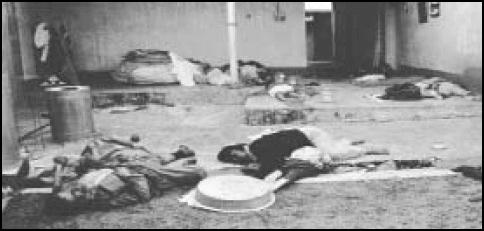
The latter were targeted at Israel and Coalition forces stationed in the Gulf region.
- up to 360 tonnes of bulk chemical warfare agent, including 1.5 tonnes of VX nerve agent;
- over 30,000 special munitions for delivery of chemical and biological agents.
THE CURRENT POSITION: 1998–2002
- Iraq’s chemical, biological, nuclear and ballistic missiles programmes are well-funded.
CHEMICAL AND BIOLOGICAL WEAPONS
Joint Intelligence Committee (JIC) Assessment: 1999–2002
Chemical and biological agents: surviving stocks
7. Iraq has claimed that all its biological agents and weapons have been destroyed.
Chemical agent: production capabilities
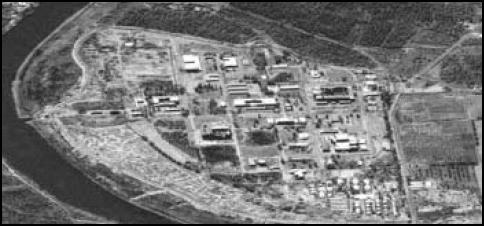
FIGURE 1: THE IBN SINA COMPANY AT TARMIYAH
Biological agent: production capabilities
The Problem of Dual-Use Facilities
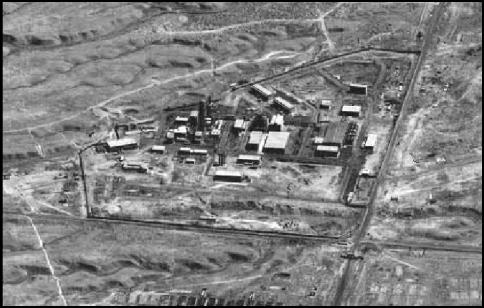
FIGURE 2: AL-SHARQAT CHEMICAL PRODUCTION FACILITY
Chemical and biological agents: delivery means
Chemical and biological warfare: command and control
Chemical and biological weapons: summary
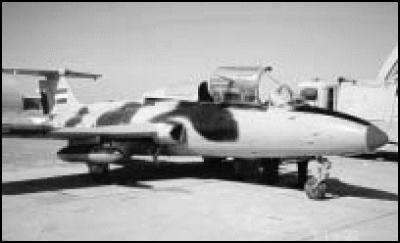
FIGURE 3: THE L-29 JET TRAINER
- a variety of delivery means available;
Joint Intelligence Committee (JIC) Assessments: 1999–2001
Iraqi nuclear weapons expertise
Elements of a nuclear weapons programme: nuclear fission weapon
A typical nuclear fission weapon consists of:
— HEU can be made in gas centrifuges (see separate box on p25);
— plutonium is made by reprocessing fuel from a nuclear reactor;
- sophisticated electronics to fire the explosives;
- a neutron initiator to provide initial burst of neutrons to start the nuclear reactions.
Gas centrifuge uranium enrichment
Weaponisation is the conversion of these concepts into a reliable weapon. It includes:
- developing a weapon design through sophisticated science and complex calculations;
- engineering design to integrate with the delivery system;
- specialised equipment to cast and machine safely the nuclear core;
- dedicated facilities to assemble the warheads;
- a large balancing machine which could be used in initial centrifuge balancing work.
Iraq’s civil nuclear programme
- Iraq has no nuclear power plants and therefore no requirement for uranium as fuel.
- Iraq’s research reactors are non-operational; two were bombed and one was never completed.
Joint Intelligence Committee (JIC) Assessment: 1999–2002
The Iraqi ballistic missile programme since 1998
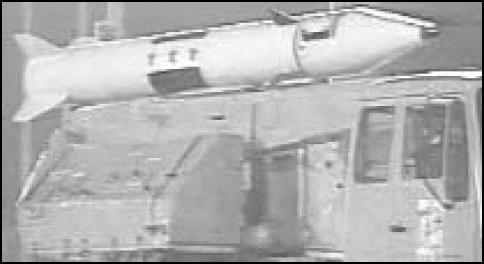
FIGURE 4: ABABIL-100
propellant offer greater ease of storage, handling and mobility. They are also quicker to take into and out of action and can stay at a high state of readiness for longer periods.
27. According to intelligence, Iraq has retained up to 20 al-Hussein missiles (Figure 5), in breach of UN Security Council Resolution 687. These missiles were either hidden from the UN as complete systems, or re-assembled using illegally retained engines and other components. We judge that the engineering expertise available would allow these missiles to be maintained effectively, although the fact that at least some require re-assembly makes it difficult to judge exactly how many could be available for use. They could be used with conventional, chemical or biological warheads and, with a range of up to 650km, are capable of reaching a number of countries in the region including Cyprus, Turkey, Saudi Arabia, Iran and Israel.
Page 28
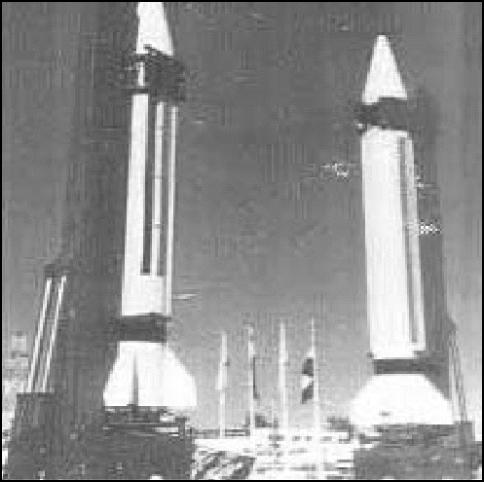
FIGURE 5: AL-HUSSEIN
28. Intelligence has confirmed that Iraq wants to extend the range of its missile systems to over 1000km, enabling it to threaten other regional neighbours. This work began in 1998, although efforts to regenerate the long-range ballistic missile programme probably began in 1995. Iraq’s missile programmes employ hundreds of people. Satellite imagery (Figure 6) has shown a new engine test stand being constructed (A), which is larger than the current one used for al-Samoud (B), and that formerly used for testing SCUD engines (C) which was dismantled under UNSCOM supervision. This new stand will be capable of testing engines for medium range ballistic missiles (MRBMs) with ranges over 1000km, which are not permitted under UN Security Council Resolution 687.
Such a facility would not be needed for systems that fall within the UN permitted range of 150km. The Iraqis have recently taken measures to conceal activities at this site. Iraq is also working to obtain improved guidance technology to increase missile accuracy.
Page 29
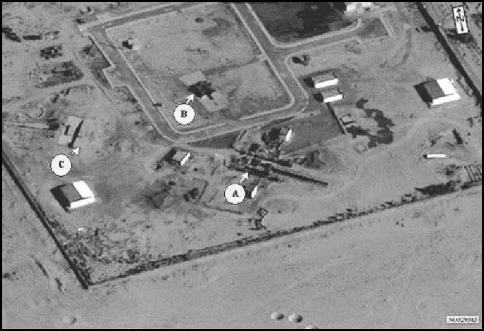
FIGURE 6: AL-RAFAH/SHAHIYAT LIQUID PROPELLANT ENGINE STATIC TEST STAND
29. The success of UN restrictions means the development of new longer-range missiles is likely to be a slow process. These restrictions impact particularly on the:
- availability of foreign expertise;
- conduct of test flights to ranges above 150km;
- acquisition of guidance and control technology.
30. Saddam remains committed to developing longer-range missiles. Even if sanctions remain effective, Iraq might achieve a missile capability of over 1000km within 5 years (Figure 7 shows the range of Iraq’s various missiles).
31. Iraq has managed to rebuild much of the missile production infrastructure destroyed in the Gulf War and in Operation Desert Fox in 1998 (see Part 2). New missile-related infrastructure is also under construction. Some aspects of this, including rocket propellant mixing and casting facilities at the al-Mamoun Plant, appear to replicate those linked to the prohibited Badr-2000 programme (with a planned range of 700–1000km) which were destroyed in the Gulf War or dismantled by UNSCOM. A new plant at al-Mamoun for indigenously producing ammonium perchlorate, which is a key ingredient in the production of solid propellant rocket motors, has also been constructed. This has been provided illicitly by NEC Engineers Private Limited, an Indian chemical engineering firm with extensive links in Iraq, including to other suspect facilities such as the Fallujah 2 chlorine plant. After an extensive investigation, the Indian authorities have recently suspended its export licence, although other individuals and companies are still illicitly procuring for Iraq.
32. Despite a UN embargo, Iraq has also made concerted efforts to acquire additional production technology, including machine tools and raw materials, in breach of UN Security Council Resolution 1051. The embargo has succeeded in blocking many of these attempts, such as requests to buy magnesium powder and ammonium chloride. But we know from intelligence that some items have found their way to the Iraqi ballistic missile programme. More will inevitably continue to do so. Intelligence makes it clear that Iraqi procurement agents and front companies in third countries are seeking illicitly to acquire propellant chemicals for Iraq’s ballistic missiles. This includes production level quantities of near complete sets of solid propellant rocket motor ingredients such as aluminium powder, ammonium perchlorate and hydroxyl terminated polybutadiene. There have also been attempts to acquire large quantities of liquid propellant chemicals such as Unsymmetrical Dimethylhydrazine (UDMH) and diethylenetriamene. We judge these are intended to support production and deployment of the al-Samoud and development of longer-range systems.
Page 30
Page 31
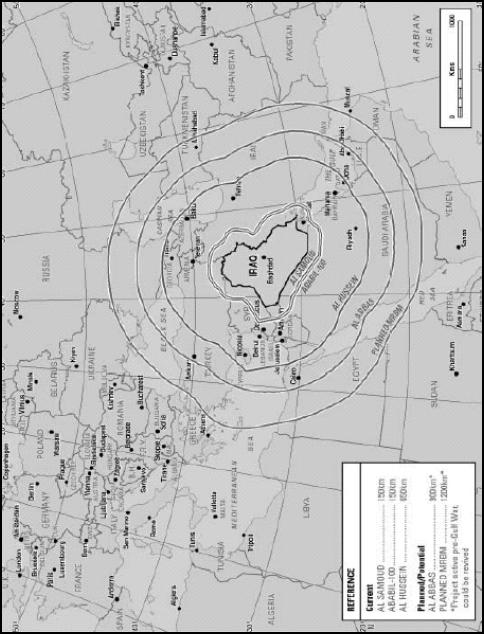
FIGURE 7: CURRENT AND PLANNED/POTENTIAL BALLISTIC MISSILES
FUNDING FOR THE WMD PROGRAMME
33. The UN has sought to restrict Iraq’s ability to generate funds for its chemical, biological and other military programmes. For example, Iraq earns money legally under the UN Oil For Food Programme (OFF) established by UNSCR 986, whereby the proceeds of oil sold through the UN are used to buy humanitarian supplies for Iraq. This money remains under UN control and cannot be used for military procurement. However, the Iraqi regime continues to generate income outside UN control either in the form of hard currency or barter goods (which in turn means existing Iraqi funds are freed up to be spent on other things).
34. These illicit earnings go to the Iraqi regime. They are used for building new palaces, as well as purchasing luxury goods and other civilian goods outside the OFF programme. Some of these funds are also used by Saddam Hussein to maintain his armed forces, and to develop or acquire military equipment, including for chemical, biological, nuclear and ballistic missile programmes. We do not know what proportion of these funds is used in this way. But we have seen no evidence that Iraqi attempts to develop its weapons of mass destruction and its ballistic missile programme, for example through covert procurement of equipment from abroad, has been inhibited in any way by lack of funds. The steady increase over the last three years in the availability of funds will enable Saddam to progress the programmes faster.
Iraq’s illicit earnings
Year Amount in $billions
1999 0.8 to 1
2000 1.5 to
2
2001 3
2002 3 (estimate)
UN Sanctions
UN sanctions on Iraq prohibit all imports to and exports from Iraq. The UN must clear any goods entering or leaving. The UN also administers the Oil for Food (OFF) programme. Any imports entering Iraq under the OFF programme are checked against the Goods Review List for potential military or weapons of mass destruction utility.
Page 32
HISTORY OF UN WEAPONS INSPECTIONS
- The 1925 Geneva Protocol which bans the use of chemical and biological weapons;
UN Security Council Resolutions relating to Weapons of Mass Destruction
OMV was conducted from April 1995 to 15 December 1998, when the UN left Iraq.
Iraqi Non-Co-operation with the Inspectors
UNSCOM concluded that Iraqi policy was based on the following actions:
- and to conceal the existence of its biological weapons programme.
A photograph of a “presidential site” or what have been called “palaces”.

The total area taken by Buckingham Palace and its grounds has been superimposed to demonstrate their comparative size Boundary of presidential site
Page 36
Iraq’s policy of deception
Iraq has admitted to UNSCOM to having a large, effective, system for hiding proscribed material including documentation, components, production equipment and possibly biological and chemical agents and weapons from the UN. Shortly after the adoption of UNSCR 687 in April 1991, an Administrative Security Committee (ASC) was formed with responsibility for advising Saddam on the information which could be released to UNSCOM and the IAEA. The Committee consisted of senior Military Industrial Commission (MIC) scientists from all of Iraq’s weapons of mass destruction programmes. The Higher Security Committee (HSC) of the Presidential Office was in overall command of deception operations. The system was directed from the very highest political levels within the Presidential Office and involved, if not Saddam himself, his youngest son, Qusai. The system for hiding proscribed material relies on high mobility and good command and control. It uses lorries to move items at short notice and most hide sites appear to be located close to good road links and telecommunications. The Baghdad area was particularly favoured. In addition to active measures to hide material from the UN, Iraq has attempted to monitor, delay and collect intelligence on UN operations to aid its overall deception plan.
Intimidation
6. Once inspectors had arrived in Iraq, it quickly became apparent that the Iraqis would resort to a range of measures (including physical threats and psychological intimidation of inspectors) to prevent UNSCOM and the IAEA from fulfilling their mandate.
7. In response to such incidents, the President of the Security Council issued frequent statements calling on Iraq to comply with its disarmament and monitoring obligations.
Obstruction
8. Iraq denied that it had pursued a biological weapons programme until July 1995.
In July 1995, Iraq acknowledged that biological agents had been produced on an industrial scale at al-Hakam. Following the defection in August 1995 of Hussein Kamil, Saddam’s son-in-law and former Director of the Military Industrialisation Commission, Iraq released over 2 million documents relating to its mass destruction weaponry programmes and acknowledged that it had
Iraqi obstruction of UN weapons inspection teams
- firing warning shots in the air to prevent IAEA inspectors from intercepting nuclear related equipment (June 1991);
- keeping IAEA inspectors in a car park for 4 days and refusing to allow them to leave with incriminating documents on Iraq’s nuclear weapons programme (September 1991);
- announcing that UN monitoring and verification plans were “unlawful” (October 1991);
- refusing UNSCOM inspectors access to the Iraqi Ministry of Agriculture.
Threats were made to inspectors who remained on watch outside the building. The inspection team had reliable evidence that the site contained archives related to proscribed activities;
- in 1991–2 Iraq objected to UNSCOM using its own helicopters and choosing its own flight plans. In January 1993 it refused to allow UNSCOM the use of its own aircraft to fly into Iraq;
- refusing to allow UNSCOM to install remote-controlled monitoring cameras at two key missile sites (June-July 1993);
- repeatedly denying access to inspection teams (1991- December 1998);
- interfering with UNSCOM’s helicopter operations, threatening the safety of the aircraft and their crews (June 1997);
- demanding the end of U2 overflights and the withdrawal of US UNSCOM staff (October 1997);
- destroying documentary evidence of programmes for weapons of mass destruction (September 1997).
Page 37
pursued a biological programme that led to the deployment of actual weapons.
Iraq admitted producing 183 biological weapons with a reserve of agent to fill considerably more.
9. Iraq tried to obstruct UNSCOM’s efforts to investigate the scale of its biological weapons programme. It created forged documents to account for bacterial growth media, imported in the late 1980s, specifically for the production of anthrax, botulinum toxin and probably plague. The documents were created to indicate that the material had been imported by the State Company for Drugs and Medical Appliances Marketing for use in hospitals and distribution to local authorities. Iraq also censored documents and scientific papers provided to the first UN inspection team, removing all references to key individuals, weapons and industrial production of agents.
Inspection of Iraq’s biological weapons programme In the course of the first biological weapons inspection in August 1991, Iraq claimed that it had merely conducted a military biological research programme. At the site visited, al-Salman, Iraq had removed equipment, documents and even entire buildings. Later in the year, during a visit to the al-Hakam site, Iraq declared to UNSCOM inspectors that the facility was used as a factory to produce proteins derived from yeast to feed animals.
Inspectors subsequently discovered that the plant was a central site for the production of anthrax spores and botulinum toxin for weapons. The factory had also been sanitised by Iraqi officials to deceive inspectors. Iraq continued to develop the al-Hakam site into the 1990s, misleading UNSCOM about its true purpose.
Another key site, the Foot and Mouth Disease Vaccine Institute at al-Dawrah which produced botulinum toxin and probably anthrax was not divulged as part of the programme. Five years later, after intense pressure, Iraq acknowledged that tens of tonnes of bacteriological warfare agent had been produced there and at al-Hakam.
As documents recovered in August 1995 were assessed, it became apparent that the full disclosure required by the UN was far from complete.
Successive inspection teams went to Iraq to try to gain greater understanding of the programme and to obtain credible supporting evidence. In July 1996 Iraq refused to discuss its past programme and doctrine forcing the team to withdraw in protest. Monitoring teams were at the same time finding undisclosed equipment and materials associated with the past programme. In response, Iraq grudgingly provided successive disclosures of its programme which were judged by UNSCOM and specially convened international panels to be technically inadequate.
In late 1995 Iraq acknowledged weapons testing the biological agent ricin, but did not provide production information. Two years later, in early 1997, UNSCOM discovered evidence that Iraq had produced ricin.
Page 38
10. Iraq has yet to provide any documents concerning production of agent and subsequent weaponisation. Iraq destroyed, unilaterally and illegally, some biological weapons in 1991 and 1992 making accounting for these weapons impossible. In addition, Iraq cleansed a key site at al-Muthanna, its main research and development, production and weaponisation facility for chemical warfare agents, of all evidence of a biological programme in the toxicology department, the animal-house and weapons filling station.
11. Iraq refused to elaborate further on the programme during inspections in 1997 and 1998, confining discussion to previous topics. In July 1998 Tariq Aziz personally intervened in the inspection process stating that the biological programme was more secret and more closed than other mass destruction weaponry programmes.
He also played down the significance of the programme. Iraq has presented the biological weapons programme as the personal undertaking of a few misguided scientists.
12. At the same time, Iraq tried to maintain its nuclear weapons programme via a concerted campaign to deceive IAEA inspectors. In 1997 the IAEA Director General stated that the IAEA was “severely hampered by Iraq’s persistence in a policy of concealment and understatement of the programme’s scope”.
Inspection achievements
13. Despite the conduct of the Iraqi authorities towards them, both UNSCOM and the IAEA Action Team have valuable records of achievement in discovering and exposing Iraq’s biological weapons programme and destroying very large quantities of chemical weapons stocks and missiles as well as the infrastructure for Iraq’s nuclear weapons programme.
14. Despite UNSCOM’s efforts, following the effective ejection of UN inspectors in December 1998 there remained a series of significant unresolved disarmament issues. In summarising the situation in a report to the UN Security Council, the UNSCOM Chairman, Richard Butler, indicated that:
- contrary to the requirement that destruction be conducted under international supervision “Iraq undertook extensive, unilateral and secret destruction of large quantities of proscribed weapons and items”;
- and Iraq “also pursued a practice of concealment of proscribed items, including weapons, and a cover up of its activities in contravention of Council resolutions”.
Overall, Richard Butler declared that obstructive Iraqi activity had had “a significant impact upon the Commission’s disarmament work”.
Page 39
Withdrawal of the inspectors
15. By the end of 1998 UNSCOM was in direct confrontation with the Iraqi Government which was refusing to co-operate. The US and the UK had made clear that anything short of full co-operation would make military action unavoidable. Richard Butler was requested to report to the UN Security Council in December 1998 and stated that, following a series of direct confrontations, coupled with the systematic refusal by Iraq to co-operate, UNSCOM was no longer able to perform its disarmament mandate. As a direct result on 16 December the weapons inspectors were withdrawn. Operation Desert Fox was launched by the US and the UK a few hours afterwards.
Operation Desert Fox (16–19 December 1998)
Operation Desert Fox targeted industrial facilities related to Iraq’s ballistic missile programme and a suspect biological warfare facility as well as military airfields and sites used by Iraq’s security organisations which are involved in its weapons of mass destruction programmes. Key facilities associated with Saddam Hussein’s ballistic missile programme were significantly degraded.
UNSCOM and IAEA achievements
UNSCOM surveyed 1015 sites in Iraq, carrying out 272 separate inspections.
Despite Iraqi obstruction and intimidation, UN inspectors uncovered details of chemical, biological, nuclear and ballistic missile programmes. Major UNSCOM/IAEA achievements included:
- the destruction of 40,000 munitions for chemical weapons, 2,610 tonnes of chemical precursors and 411 tonnes of chemical warfare agent;
- the dismantling of Iraq’s prime chemical weapons development and production complex at al-Muthanna and a range of key production equipment;
- the destruction of 48 SCUD-type missiles, 11 mobile launchers and 56 sites, 30 warheads filled with chemical agents, and 20 conventional warheads;
- the destruction of the al-Hakam biological weapons facility and a range of production equipment, seed stocks and growth media for biological weapons;
- the discovery in 1991 of samples of indigenously-produced highly enriched uranium, forcing Iraq’s acknowledgement of uranium enrichment programmes and attempts to preserve key components of its prohibited nuclear weapons programme;
- the removal and destruction of the infrastructure for the nuclear weapons programme, including the al-Athir weaponisation/testing facility.
Page 40
The situation since 1998
16. There have been no UN-mandated weapons inspections in Iraq since 1998. In an effort to enforce Iraqi compliance with its disarmament and monitoring obligations, the UN Security Council passed Resolution 1284 in December 1999. This established the United Nations Monitoring, Verification and Inspection Commission (UNMOVIC) as a successor organisation to UNSCOM and called on Iraq to give UNMOVIC inspectors “immediate, unconditional and unrestricted access to any and all areas, facilities, equipment, records and means of transport”. It also set out the steps Iraq needed to take in return for the eventual suspension and lifting of sanctions. A key measure of Iraqi compliance would be full co-operation with UN inspectors, including unconditional, immediate and unrestricted access to any and all sites, personnel and documents.
17. For the past three years, Iraq has allowed the IAEA to carry out an annual inspection of a stockpile of nuclear material (depleted natural and low-enriched uranium). This has led some countries and western commentators to conclude erroneously that Iraq is meeting its nuclear disarmament and monitoring obligations. As the IAEA has pointed out in recent weeks, this annual inspection does “not serve as a substitute for the verification activities required by the relevant resolutions of the UN Security Council”.
18. Dr Hans Blix, the Executive Chairman of UNMOVIC, and Dr Mohammed El-Baradei, the Director General of the IAEA, have declared that in the absence of inspections it is impossible to verify Iraqi compliance with its UN disarmament and monitoring obligations. In April 1999 an independent UN panel of experts noted that “the longer inspection and monitoring activities remain suspended, the more difficult the comprehensive implementation of Security Council resolutions becomes, increasing the risk that Iraq might reconstitute its proscribed weapons programmes”.
19. The departure of the inspectors greatly diminished the ability of the international community to monitor and assess Iraq’s continuing attempts to reconstitute its chemical, biological, nuclear and ballistic missile programmes.
Page 41
Page 42
IRAQ UNDER SADDAM HUSSEIN
2. Public life in Iraq is nominally dominated by the Ba’ath Party (see box on p44).
He uses them to convey his orders, including to members of the government.
Saddam Hussein’s rise to power
Saddam returned to Baghdad in 1963 when the Ba’ath Party came to power.
Internal Repression – the Kurds and the Shias
Saddam Hussein’s security apparatus
- The Directorate of Military Intelligence’s role includes the investigation of military personnel.
1987-88, al-Majid led the “Anfal” campaign of attacks on Kurdish villages.
Repression and control: some examples
The regime responded by killing thousands. Many Shia tried to escape to Iran and Saudi Arabia.
Opposition to Saddam during the Iran-Iraq war
Abuses by Iraqi forces in Kuwait
- Robbery and rape of Kuwaitis and expatriates.
- People dragged from their homes and held in improvised detention centres.
- Kuwaiti civilians arrested for “crimes” such as wearing beards.
Human rights: abuses under Saddam Hussein
- 4000 prisoners were executed at Abu Ghraib Prison in 1984.
- 3000 prisoners were executed at the Mahjar Prison between 1993 and 1998.
- About 2500 prisoners were executed between 1997 and 1999 in a “prison cleansing” campaign.
- Women prisoners at Mahjar are routinely raped by their guards.
Human Rights – mistreatment in Abu Ghraib Prison
29. Some 40 of Saddam’s relatives, including women and children, have been killed.
Human Rights – individual testimony
Human Rights –individual testimony
Printed in
the United Kingdom by The Stationery Office Limited ID
114567 9/2002 776073


 Friends of Tonga: Bilingual Reading Apps Aim To Boost Literacy In Tonga
Friends of Tonga: Bilingual Reading Apps Aim To Boost Literacy In Tonga UN News: Guterres Alarmed By Israeli Plans To Expand Gaza Ground Offensive
UN News: Guterres Alarmed By Israeli Plans To Expand Gaza Ground Offensive Caleb Fotheringham, RNZ Pacific: Poverty Persists Across PNG And Pacific Despite Economic Growth - World Bank
Caleb Fotheringham, RNZ Pacific: Poverty Persists Across PNG And Pacific Despite Economic Growth - World Bank 350.org: 350.org Pacific Reacts To Albanese Win In Australia Federal Elections
350.org: 350.org Pacific Reacts To Albanese Win In Australia Federal Elections Carbon Market Watch: Cookstove Carbon Credits: Recipe For Cooking The Climate Books
Carbon Market Watch: Cookstove Carbon Credits: Recipe For Cooking The Climate Books Reporters Without Borders: RSF Releases 2025 World Press Freedom Index
Reporters Without Borders: RSF Releases 2025 World Press Freedom Index